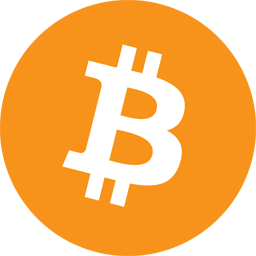

Compared to the $1 trillion traded in the basic Foreign Exchange Markets day by day, big traders get to go ahead and move Bitcoin's price around. This makes living on Bitcoin an absolute roller coaster. There were price fluctuations of up to 20% 30% a day once in ages. Yet, as transactions rise, volumes go up, and volatility declines. If we evaluate Bitcoin's volatility to bound well-known currencies, for instance, the Argentinian Peso, we understand that volatility is relative. Back in 2008, in the peak of the monetary crisis, a whitepaper by a mysterious Satoshi Nakamoto emerged detailing an digital peer to see cash system that was absolutely decentralized without a servers or tremendous authority. The idea of a digital price answer wasn't new; it was tried by economists and engineers alike throughout the 90's. What Satoshi had done was to create a "trustless" system that operated without the need of a 3rd party to substantiate transactions. Satoshi had solved the "double spend" challenge that had plagued economists for decades, giving birth to Bitcoin, a digital payments answer that might prove to be the next evolution for money and our financial system. What makes this solution so unique is that Bitcoin, in spite of being virtual, cannot be forged, hacked or managed by a single entity. This was completed by coming up the Blockchain, an incorruptible digital ledger of financial transactions.
Many label it as a speculative pyramid scheme – without knowing that every one executive posted money is such. To the extent anyone holds cash over other assets, they're speculating that other assets will decline in relative value. Concerns abound over the security of the encryption scheme, the velocity of transactions, the dimensions of the block chain, the irreversibility of the transactions, and the capability for hacking and theft. All are fixable thru third party amenities and protocol upgrades. It’s better to center around Bitcoin the protocol as Bitcoin 1. 0, destined to conform just as HTTP 1.
The normal time among a purchase order and a move or withdraw is 30 90 days.
5. There are distinct facets of work and life during this industry that not all people knows about. We are browsing to honor all of them, individuals who don't take the reward for themselves, who stay behind all the virtual items that we are using. We also want to make "Techies Story: The Untold" a place where those single bits can be happy with what they have contributed. If you'd prefer to say “hello": requests, media and pitches:Behind the scenes, the Bitcoin network is sharing a public ledger called the "block chain". This ledger consists of every transaction ever processed, allowing a user's laptop to ensure the validity of each transaction. The authenticity of each transaction is blanketed by electronic signatures corresponding to the sending addresses, allowing all users to have full handle over sending bitcoins from their own Bitcoin addresses. In addition, anyone can manner transactions using the computing power of specialised hardware and earn a reward in bitcoins for this provider. This is commonly called "mining". To learn more about Bitcoin, you could talk to the dedicated page and the usual paper. Much of the trust in Bitcoin comes from the undeniable undeniable fact that it requires no trust at all.
But would it not not really persuade anyone now?An trade rationalization would immediately emerge—the keys were stolen or lost, or the presumptive Satoshi had worked some trickery. “It doesn’t matter what in point of fact, it’s not going to be as grand as what people concentrate on,” Laszlo Hanyecz, one of the vital early bitcoin builders who communicated with Satoshi for years, told me lately. “To be purposeful, I guess we are never going to take into account. Even if the person, people, something—though Satoshi comes back, it’s going to be like Jesus. Nobody goes to agree with him, right?” After a decade of false prophets, we've fooled ourselves too many times. And this finally brings us to what I think Bitcoin really is. It’s a form of capital / forex flight. In a way, and I didn’t coin this analogy but I can’t find who did — update: it was Stefan Molyneux all fiat currencies are experiencing a hyper inflationary collapse in opposition t Bitcoin. It makes a specific amount of sense, the logical result for the vast financial printing of the last century is an inflationary blowout. But that evokes images of Weimar Germany and wheelbarrows filled with cash, the recent Zimbabwe disintegrate or possibly Brazil — where banks installed a second clock to convey the price of your money eroding if you ready in line, it all seems so unthinkable here. Bitcoin is digital gold, and this continues to be its most suitable and concise metaphor.